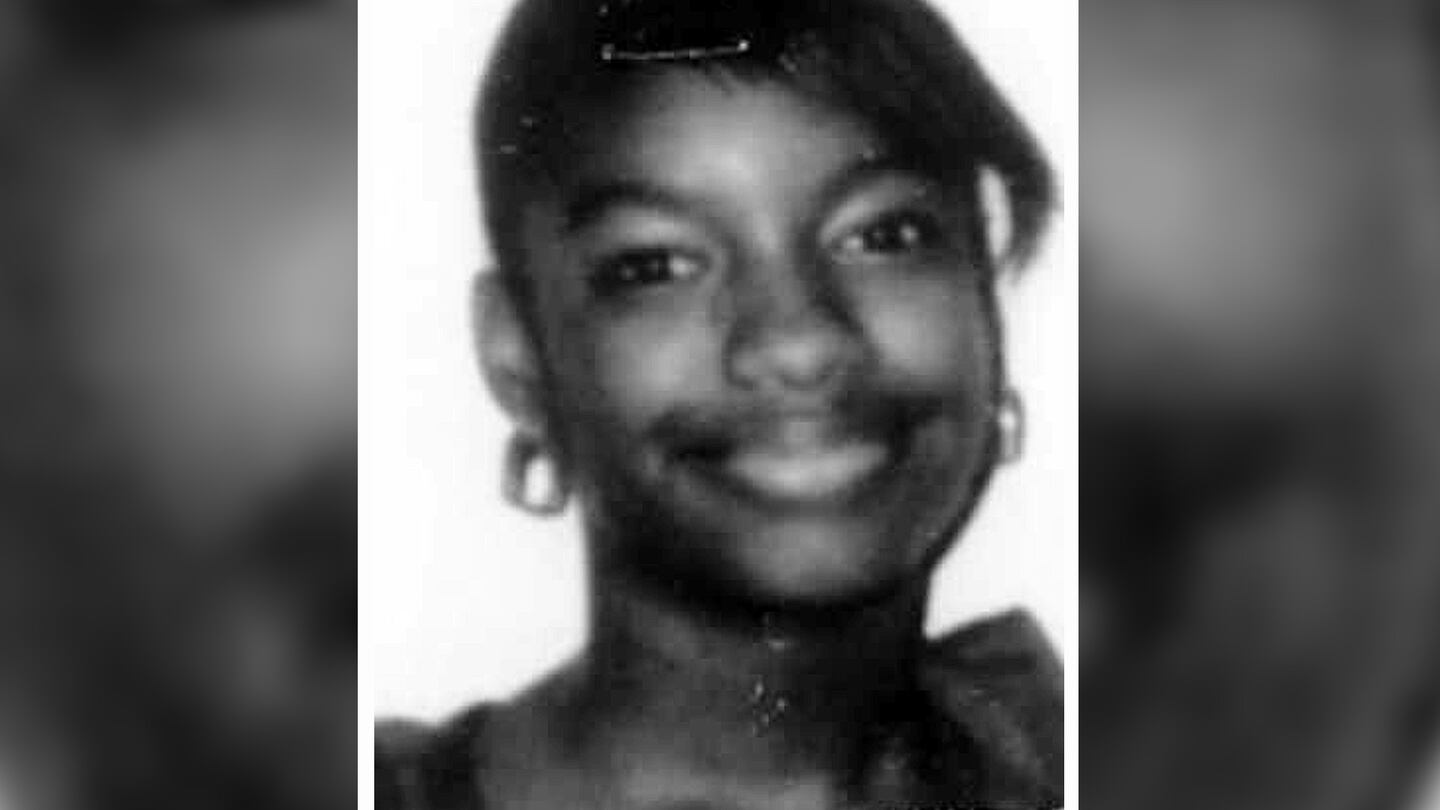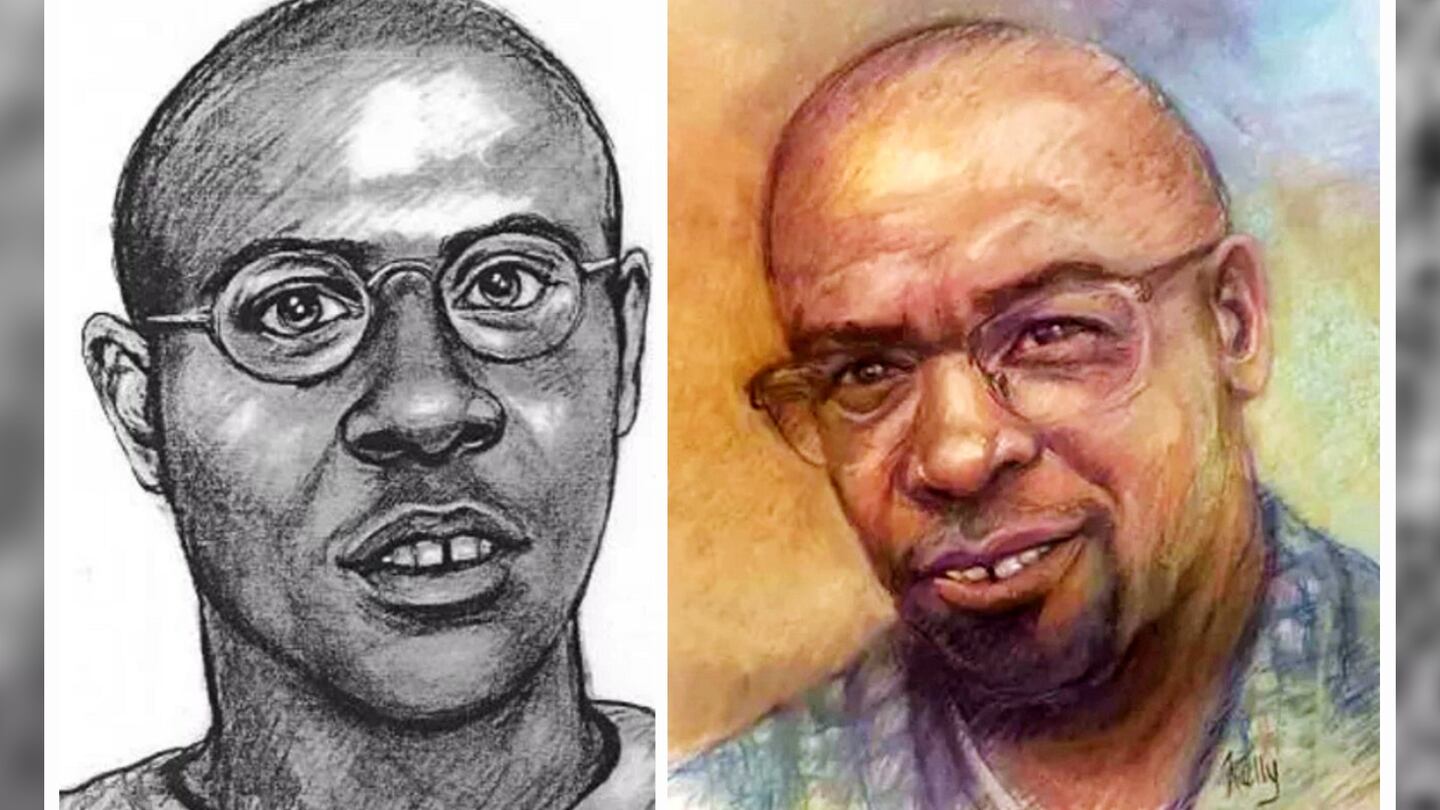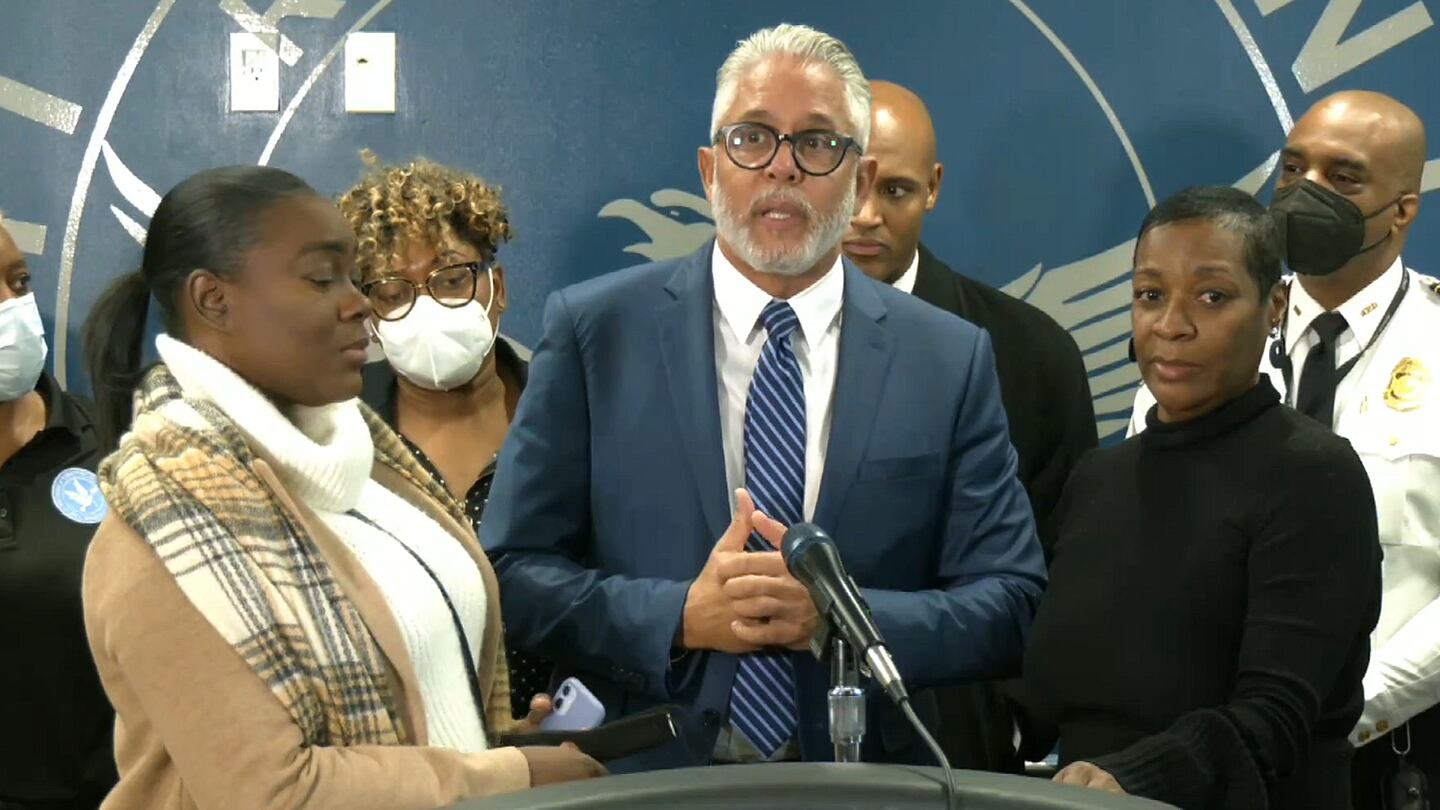ATLANTA — Atlanta police officials have identified the man they allege raped and murdered a 14-year-old girl on her way to school more than 26 years ago.
Nacole Smith vanished June 7, 1995, as she walked through a wooded area near her southwest Atlanta home. When her body was found a short time later, she had been sexually assaulted, beaten and shot twice in the face.
Authorities said Tuesday morning that Nacole’s suspected killer, whose name was not released, was identified through DNA evidence and genetic genealogy. The man died of liver and kidney failure in August 2021.
The teen’s mother lamented Tuesday that she will never be able to confront the man who stole her daughter’s life.
“I’ll live with this pain for the rest of my life. Just take it one day a time,” Acquanellia Smith said. “There’s nothing more I can say right now. My feelings are all over the place. There’s not a pill that can take that pain away.”
‘This case has not died’
According to multiple accounts of the crime, Nacole, her sister and some friends began walking from the Deerfield Apartments to their middle school the morning of the murder. Nacole, who had a project due that day, realized she had forgotten it at home and turned back to retrieve it.
The straight-A student, who was days away from her middle school graduation, took a popular shortcut through some woods. She never made it home.
Retired Atlanta police Det. Vince Velazquez, a longtime investigator on the case, said Tuesday that Nacole was accosted in the woods by her killer, who brutally assaulted her before firing twice into her head.
Security guards working at a nearby apartment complex found her body after hearing a gunshot and going to investigate.
Nacole’s death struck a cord with many within the police department.
Det. Reginald Boone, now retired, was first on the scene after Nacole’s body was found that hot summer day. At Tuesday’s news conference, he was just one of multiple investigators, both active and retired, who had worked on the case over the years.
“Everybody that has touched this case has stayed with it for the full length of the 26 years,” Boone said.
Velazquez said the 1995 investigation into the murder was a massive one.
“The Atlanta Police Department pulled out all stops,” Velazquez said. “They interviewed hundreds of people. They brought two recruit classes out to canvass the neighborhood.
“And they ended up taking blood samples from at least 50 people. There is a DNA profile that was obtained in 1995.”
Watch Tuesday’s news conference below.
DNA technology was in its infancy at the time, however, and the case went cold. Velazquez said he reopened the case on his own in 2002, seven years after Nacole’s murder.
The detective got a break in 2004, when the teen’s suspected killer struck again. A 13-year-old East Point girl walking home one night was pulled into a wooded area a few miles from where Nacole was slain.
The man raped the girl, who was able to escape and summon help.
The DNA her assailant left behind matched that of the man who had raped and killed Nacole nine years earlier.
“That means Nacole’s killer was back,” Velazquez said.
The case made national headlines at that time and was profiled on “America’s Most Wanted.” Billboards also went up with a composite sketch of the suspect, created with help from his surviving 13-year-old victim.
Still, the case remained unsolved.
Velazquez said he continued working the case until his own 2017 retirement. At that point, the case fell to Det. Scott Demeester, who joined the homicide unit in 2010.
Demeester, who is three months older than Nacole, said Tuesday that he was a high school freshman when she was slain.
The detective told reporters Tuesday that after he took over Nacole’s case, it took another three years to develop a person of interest in her murder.
“I was always looking for new ways, new potential investigative leads,” Demeester said.
In 2020, that included the use of genetic genealogy to tie DNA evidence in the case to a family tree containing a possible killer. Just after Christmas the detective received the news he and his predecessors had awaited for years: there was a DNA match to the genetic profile of the man who killed Nacole and raped the East Point victim in 2004.
Detectives, who had maintained contact with the Smith family, as well as the surviving victim for decades, were able to let both families know the case was at its end.
“I would not have been able to do what I did without help from a lot of people,” Demeester said. “I was just glad to be able to make that phone call to Ms. Smith. It was an emotional phone call.”
The victim in the 2004 case, who spoke publicly Tuesday, said she didn’t want to hide any longer.
“He is no longer out there, able to do the things he did to me and Nacole and to others,” Betty Brown said.
As Brown and Smith stepped together to the microphone, Brown told the tearful mother that she was sorry for the circumstances through which they had met.
“I feel like we didn’t get the closure that we needed, but we got some kind of resolution,” the younger woman said.
>> Read more true crime stories
Like Nacole’s mother, Brown said she is angry that her alleged attacker died before his victims received justice. She said she has conflicting emotions, including a wish that the now-deceased man’s family understand the pain he put so many people through.
“To know the man who you respected did something so horrible to me and Nacole, I want you to live in that,” she said. “I want you to wear that like I did. Like I do every day of my life.
“I’m mad I didn’t get that opportunity to face him and look him in his eyes.”
Brown also thanked detectives for their diligence they showed in solving the case, despite the passage of time.
“I thank you, detectives, for sticking with me through all these years, checking on me and making sure I’m OK,” she said.
Velazquez said if there was ever a case the department put complete effort into, it was the Smith case.
“This case has not died,” he said.
©2022 Cox Media Group







